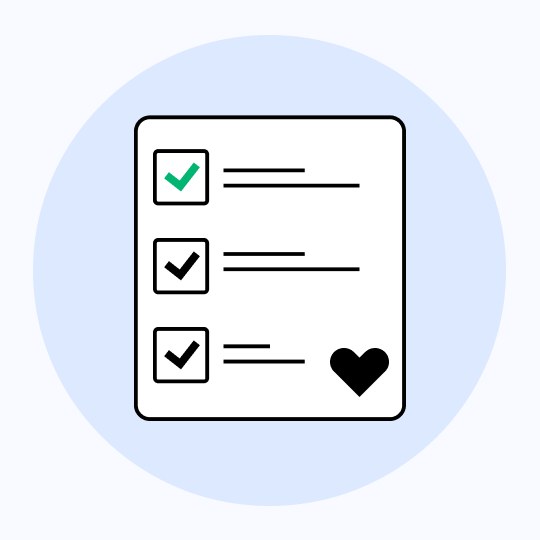Written by Chelsea Myer, BS, CHES, CPT (Certified Health Coach) and Zainab Haque, MS, RDN, LDN (Registered Dietitian)

You’ve heard the term “habit,” but do you actually know what it means or how habits are formed? In the context of behavior change, the term “habit” means a routine behavior that is repeated regularly without much conscious effor It is essentially a settled tendency or usual manner of behavior. Habit formation is broken down into 3 main components: the context cue, behavioral repetition, and the reward.
When setting a new goal, most of us think of something like this: “I will lose weight this year.” We often only focus on the final accomplishment and overlook all of the small steps that it takes us to reach that goal. We can break a long-term goal into multiple short-term goals, such as “I will lose 15 lbs in 3 months,” but we can actually break this down even further and discuss the habits that help us reach these larger milestones. Using the above goal as an example, relevant habits could include getting physical activity, eating more vegetables, and establishing a proper sleep schedule. Let’s dive into habit-formation and how to make these small changes sustainable.
Forming healthy habits that stick is all about hacking our behaviors. We essentially want to convince our brains into saving the habit you want to form into a routine. We already have some routines programmed in our brains. For instance, you may wake up, walk into the bathroom, brush your teeth, and complete your morning routine. In this scenario, the context cue occurs upon walking into the bathroom and seeing your toothbrush, face wash, etc. The behavioral repetition comes in upon performing this habit daily, and the reward is the sensation of feeling clean and ready for the day. This example is simply a chain of habits strung together to create a seamless routine. (1)

A task may be difficult to turn into a “life-long habit” unless it specifically triggers a reward process in your mind. Rewards don’t have to be a gold star, a prize, or even a cheat meal—rewards also include the way something makes us feel. If we have fun at an exercise class, we are more likely to go back to said exercise class because our brains remember that we released those “happy” neurotransmitters, such as dopamine and endorphins, in our brains. That said, it is okay to change your habits and routines. If you used to love swimming for exercise, but no longer enjoy it, or no longer have access to a pool, then it makes sense to replace that habit with a new one that makes more sense for you.
You don’t have to change everything all at once, adopt habits that make you feel good and let go of what doesn’t. A habit will not be sustainable if you dread completing the task. What this looks like: if you despise going to the gym and using equipment to exercise, don’t. Find a form of physical activity that sparks joy. Activities could include going for a walk outside, dancing, yoga, gardening, biking, hiking—your options are endless!
How much motivation do you need to engage in a certain behavior? If you feel too much hesitation or anxiety to perform the action/habit, then it will be very challenging for you to actually turn that task into a lasting habit. This hesitation makes the task, no matter how small, difficult to complete because it is creating an adverse reaction of discomfort in your brain. If the habit that you are trying to form is important to you, you will need to find a reward system to overcome the discomfort that you are experiencing.
What To Do Next:
Now that we’ve established the science of habit formation, let’s talk about a step-by-step process to form habits. Atomic Habits, a book written by James Clear, provides an easy plan to create positive, sustainable habits. The author describes these as the Four Laws of Behavior Change (2):
- Make it obvious – set up your environment so you see visual and physical cues to perform a habit
- Make it attractive – if a habit brings us pleasure, we’re more likely to continue doing it
- Make it easy – we’re more likely to do something if it’s easy than if it’s difficult
- Make it satisfying – rewards help push us to continue performing a habit
Clear breaks down the process to make it as simple as possible. Let’s go through an example. If your goal is to drink more water, your habit formation process could look like this:
- Make it obvious – keep a filled water bottle on your desk while you work. This way, it’ll be right in front of you, and each time you see it, it’ll be a cue for you to take a sip.
- Make it attractive – try getting a new water bottle or start a hydration challenge with your family/friends. Finding ways to make the process enjoyable can make starting a new habit a little more fun.
- Make it easy – if you’re not used to drinking 10-15 cups of water a day, don’t start too suddenly. Just begin with a small, easy, attainable amount. Maybe drinking one full water bottle per day is the most that you can handle at first. That’s totally fine! Just get into the habit of drinking the water, and you can work your way up gradually.
- Make it satisfying – as you continue forming this habit, you may begin to notice you have increased energy, improved mood, or you’re not getting headaches as often. These positive changes can act as rewards for establishing a new habit.
Now that you’ve seen an example, give it a try yourself! Find a goal that you’ve been meaning to achieve, divide it into small habits, and ensure each habit follows the simple 4-step process above.
Additional Tips & Tricks:
- Commit to one habit at a time. If you try to make too many lifestyle changes at a time, it can be overwhelming and exhausting. You don’t want to burn yourself out in the beginning of your wellness journey by trying to completely change your life all at once. Start with one habit, such as drinking enough water. Then, add in another, such as getting 8 hours of sleep. After committing 1-2 new habits consistently to your routine for about 3 weeks, it’s safe to begin adding more.
- Hold yourself accountable but be forgiving. It is normal to have slip ups and fall off track. What is important is that we plan for these slip ups and get back on track as quickly as possible. Planning for mistakes helps us to avoid a full reset of habitual behavior. One way you can do this is by setting contingency plans or “if, then” statements. “If I feel too tired to go to the gym today, then I will go for a walk after dinner instead.”
- Don’t try to do too much, too fast. We can often have a burst of motivation when we’re beginning to create a new habit. However, that motivation can eventually fizzle out and we can be left feeling overwhelmed. If a habit seems like it’s going to be too much work, we’re less likely to do it. Break down your goal into small, manageable steps to ensure that you’re doing it consistently, whether it’s done perfectly or imperfectly. Master the art of showing up for yourself and the rest will come with time.
- Set up your environment for success. What and who we surround ourselves with is a major factor in how the process will go. Design your environment so that it makes it easy for you to perform the habit and difficult for you to veer off track. For example, lay out your gym clothes the night before a workout so you’re all set up to exercise. Constantly seeing cues around you is going to help push you to stay focused.
- Try using a habit tracking system. Some people enjoy keeping track of their habits and checking them off each day, much like a “to-do list.” Click here to download Ivira’s weekly habit tracker that you can print and fill out for yourself.
If you would like assistance setting goals, creating new habits, or even breaking unhealthy habits, please feel free to reach out to a Health Coach or member of our Ivira Care Compass.
Contact us: 302-274-0020
References:
- Muth ND, Green DJ, Chapter 10: Translating goals into actions through the power of habit. In: American Council on Exercise, Coaching Behavior Change. American Council on Exercise; 2021: 130-135
- Clear, J., 2018. Atomic Habits: An Easy & Proven Way to Build Good Habits & Break Bad Ones. [S.l.]: Random House.

